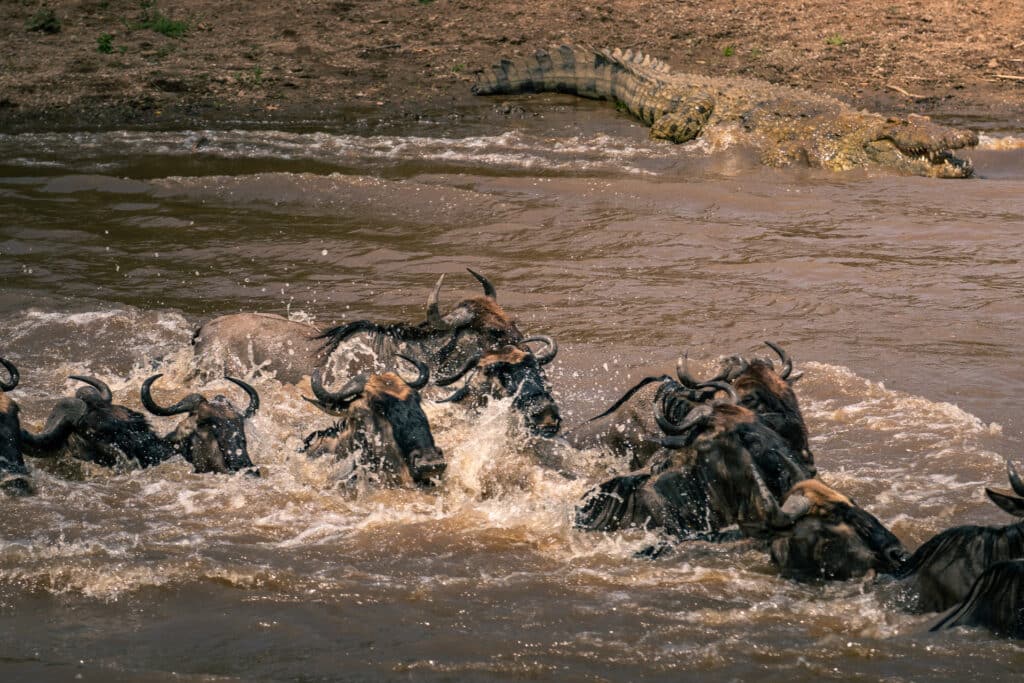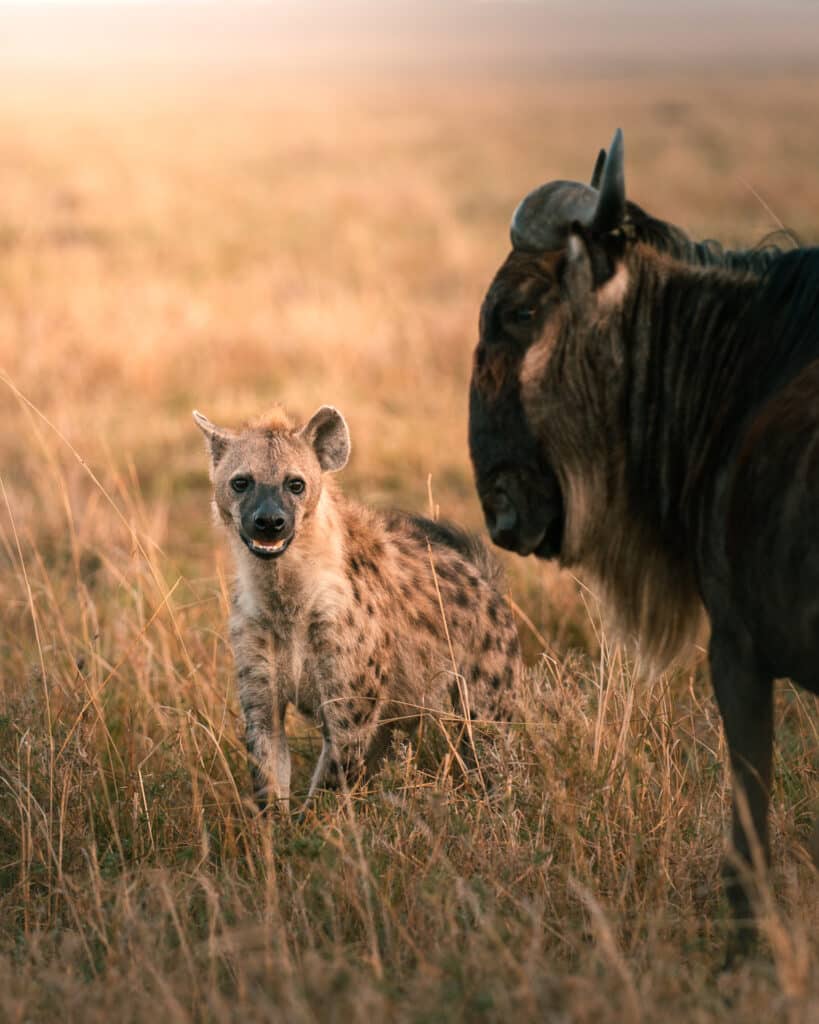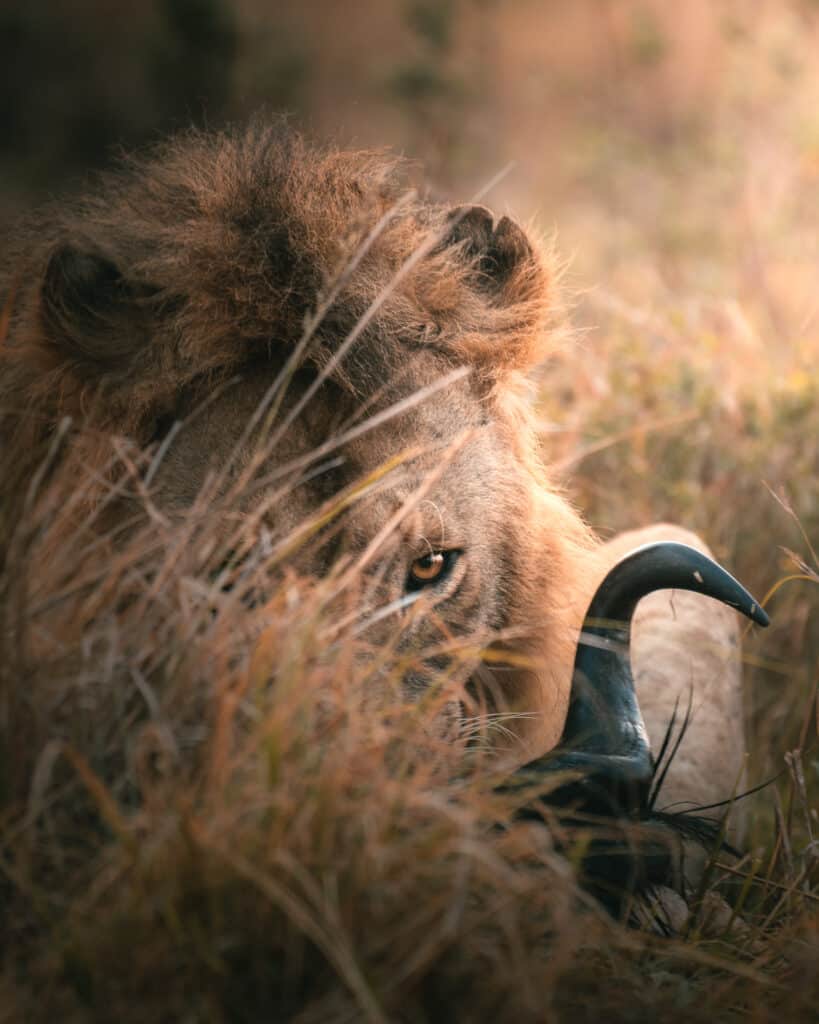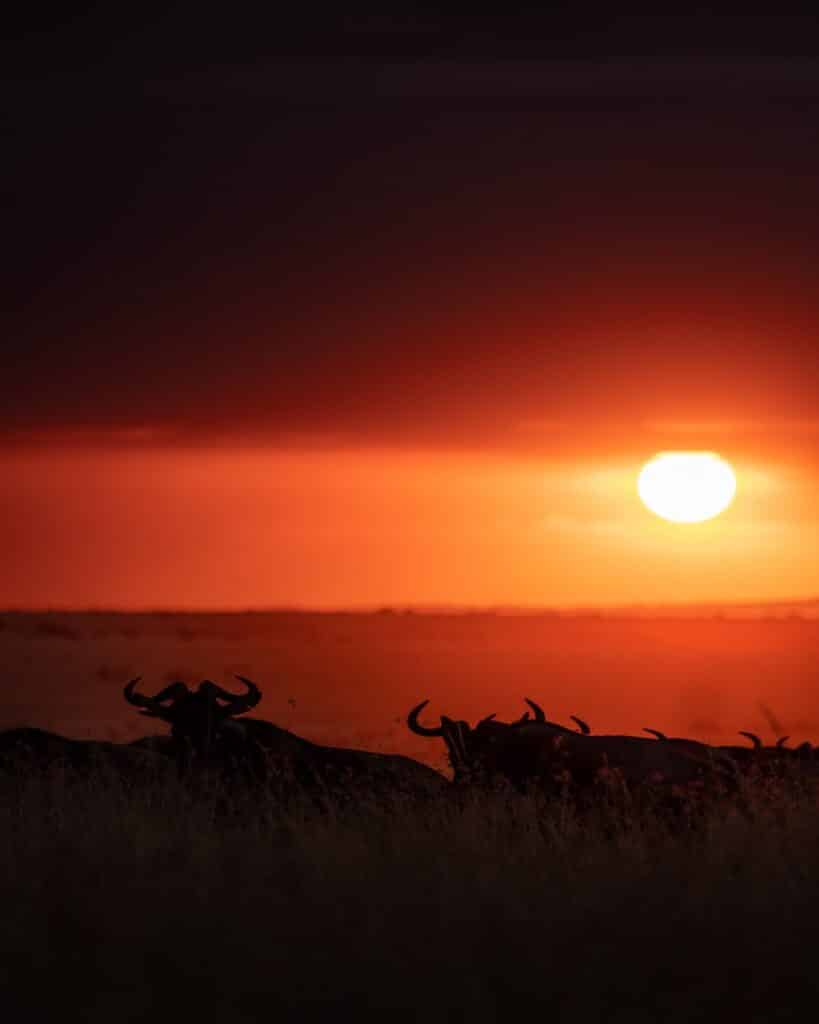As the sun begins to descend towards the horizon, I head out into the vast plains. Thousands of black dots are scattered as far as the eye can see, and as I grip my camera firmly, a deep sense of anticipation bubbles through me. The Masai Mara has erupted once more into a cacophony of activity and there’s no better time to explore and photograph this remarkable wonder of nature.

The Great Migration is the largest herd movement of animals in the world. It is a cyclical, year-long event where wildebeest and their fellow travelers trek thousands of kilometres between Tanzania and Kenya and back again, compelled by their instinct to follow the rains. At the end of the rainy season, the grass in the Mara experiences a period of dramatic growth. By the time the migrants arrive, the plains are covered with a blanket of golden red-oat grass, providing them all the nutrition needed to survive and breed.

Numerous other life forms are affected by the existence of the wildebeest: predators such as lions and crocodiles; the zebra and the gazelle; the giraffe, whose population depends on the wildebeest. The presence of so many wildebeests give the local lions something to eat other than baby giraffes.


Although one look at the hardy wildebeest reveals that they are built to undertake this treacherous voyage, surviving is no simple feat. As they traverse the wilderness, they are faced with a series of perils ranging from predators lying in wait and the frantic crocodile-infested waters of the Mara River to the sheer undertaking of maintaining their place amidst thousands of unpredictable and sometimes irrational beasts. All it takes is one wildebeest’s leap of faith to set off a cascade of thundering hooves into an abyss of calamity.


The migration is nature, raw and bloody. It’s hair raising, spine-tingling and completely dreadful and wonderful in its honesty. It is truly immersive. To the introspective observer, the herds teach us about life — lessons about unity, about overcoming challenges together and trying your best to keep one another safe from whatever lurks in the shadows.


Beyond the drama of fast-paced hunts and chaotic stampedes over steep, sandy riverbanks also lies something more delicate. Moments of tenderness, for instance, where mothers will cross the river only to turn back when they realise their young have been led astray by the commotion. Occurrences such as these are obscure and fleeting but their inherent beauty is immeasurable.

At this time of year, the game drives get longer, the excitement often too great to shy away from. Whether this means spending extended periods at crossing points or waiting patiently for a leopard to ambush, you have every reason to completely lose yourself in the grandeur.


Witnessing the land flourish so ostentatiously with life is a joy to behold; hundreds of thousands of creatures spread throughout the ecosystem. Like an ensemble, the herds alter the soundscape of the Mara, their hooves dashing through the grass and their calls producing a steady droning chant that permeate the atmosphere across great distances. The sights and sounds characteristic of this season are unmistakable.

The first groups of wildebeest that have crossed into the Reserve are some of the largest I’ve ever seen. Over recent weeks they have made the plains surrounding Ishara their home and have sought refuge at our waterhole, quenching their thirst and taking sporadic dips to cool off during the scorching afternoons. The resident predators are rejoicing and the action has been unfolding at our very doorstep, allowing guests to even witness nail-biting chases from the luxury of their own decks.

As I returned to the Mara last week, I was greeted by a sea of thick, dark clouds, accompanied by a rumbling in the distance. The quarreling skies eventually burst, and in the coming weeks, we can expect to see even larger herds being pulled into the Mara by the rhythmic pattering of rainfall and the renewal that comes with it.
This ultimate life-and-death spectacle is engrossing and exciting and leaves guests with unforgettable memories. Wouldn’t it be incredible if you had a front-row seat?
Photo credits: Eric Averdung, Samy Ghannam, Thige Njuguna